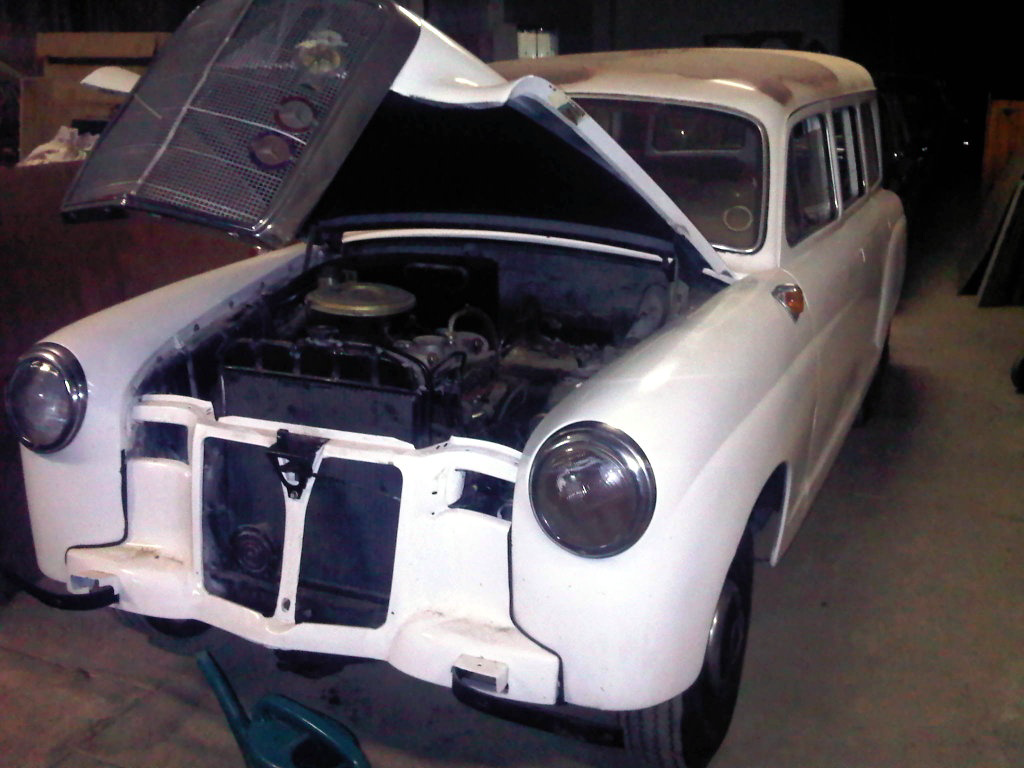Since featuring this Mercedes Kombi, we’ve had a surprising number of people contact us either wanting to learn more about these interesting wagons or wanting to share photos of theirs with us! I have to admit, I don’t know much about these rare Binz built wagons but I would sure love to learn more about them! After seeing both the Kombis we have featured, reader Andrew H decided to send us a couple photos of his and see if we could help him find out a little more information about them. Seeing as we have such a knowledgeable group of individuals here on BarnFinds I thought we would see if anyone here can share more information about these cool machines and possibly answer Andrew’s questions!
From Andrew – The latest BarnFinds email intrigued me, as it contained the story of the 1960 Mercedes Benz 190 Kombi. I read it with interest, as I too have one. From information given to me by the seller, it appears to be a 1956 Mercedes Benz 180, which was converted by Binz in Germany. I know of only 3 of these wagons in South Africa currently in Right Hand Drive format. This apparently was a barn find from the Karoo in South Africa some years back. I don’t have all the details. I have always wanted something that is unusual, and for me this is it. I love the station wagon lines. Sadly comprehensive information on the wagons is non-existant and I was hoping that someone out there would be able to help with more information such as total build number and configurations etc. So can anyone help Andrew with production numbers and configurations? I want to thank him for sharing his Kombi with us and I hope we are able to find the information he is looking for!




Greetings All,
Have followed these for about 40 plus years and here’s my $.02….
You’ve 2 different platforms these cars were built on originally.
The earlier ones were built on the MB Ponton platform. Ponton was MB’s unibody design. This platform had the 180, 190, 200, 219 and 220.
The differences were the 4 cylinder versus the six cylinder. The four had a shorter front end leaving the longer one to accommodate the extra length the two cylinder more of the six. The 219 was a base model with bakelite/phenolic trim instead of wood, sometimes used as cabs. Fuel injection was designated by an SE after the model number.
The later wagons were based on the Fin Tail/Hecke Flosse body. Both body’s have a W designation which someone else will provide as it escapes me. The Fin Tails also came in a variety of engine sizes along with headlight configuration that didn’t occur on the Pontons. Fin Tails usually had a single 7″ light on each fender for diesels and four cylinders. Six cylinders in the US had a stacked dual 5″ headlights on each fender. If a European destined car it was more likely to have Jello Moulds as we call them, a large lense that took up the same space as the dual set-up but with just a single headlight beneath.
MB also made a 300 Adenuer based wagon, it was at Greenwich a few years back.
Oddly enough Bentley made a “shooting brake” version. The original one I viewed at Lime Rock last year was interesting as it looked like a huge MB Fintail but wasn’t. The people Bentley entrusted to make the body “borrowed” many of the styling cues that the Fintail had.
The MB headlight assemblies were used in what appeared to be custom made fenders of the same MB design. The rear fenders incorporated the Fintail along with the chrome strip and the windshield had the MB vent sitting beneath, just like a Fintail. There was no way they used the same parts as the scale of the fender was taller and longer but the car was sweet and painted in MB battleship gray.
Many of the times I’ve seen these cars photographed in the natural state of their era, they were used as ambulances, service vehicles, even funeral cars.
Always wondered if these cars were built for business to trial the market and the ones that didn’t sell were sold off to the public when it was clear there wasn’t enough market to continue building.
@ Russ
My brother and I have also followed these for decades yet in another part of the world:
Los Angeles, CA.
We have a couple of these and know a bunch about these and later Wagons as well..
I guess Andrew H can contact me as well.
Maybe we can connect ?
[email protected]
Greetings HR,
You can reach me at [email protected]
Also play with Jaguars ranging from ’34 to ’82 but still have some MB’s.
Good morning Horse Radish,
I too live in Southern California (Claremont/Upland) and have a 1959 190Db wagon. My friend and I have been restoring it and only have the upholstery and reinstall the glass left to be done. Any suggestions on casual car shows to go to? Any idea what the price might be? Struggling to find values for these “binz” wagons. Thank you, Kirk
Never knew the wagons existed- but I did have a ’59 180a, my very first car at age 14, purchased for the grand sum of $95. Took hours to remove the pine sap from sitting under trees but the original paint shined up nicely. I actually have a Super 8mm film taken by myself, one hand holding the camera and the other driving/shifting as I traveled the 150 feet of my parents road frontage!